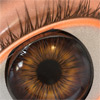- Sun May 22, 2005 10:53 pm
#27264

Kabe
Yes, and the solution is compatible to any renderer worth it's saltThomas An. wrote:It seems (given the new explanations) Maxwell is doing things more correctly than I previously thought.
I would like to see NDs below 1 for underwater scenes... It's a cheap and very useful trick to render underwater air bubbles in most renderersGiven how thorough Maxwell already is, I suspect any improvement will be in the form of a trivial tweek in the paradigm somewhere.
Actually, I don't like that idea too much, because it will create edge artifacts for shure, and it's very hard to keep the geometries consistent with such an approach.Also, the "tolerance" idea seems interesting (in a pair of facing surfaces A and B, exclude surface A from reflections in a space less than epsilon .... or something to this effect.)
Kabe
Last edited by Kabe on Sun May 22, 2005 11:00 pm, edited 1 time in total.







